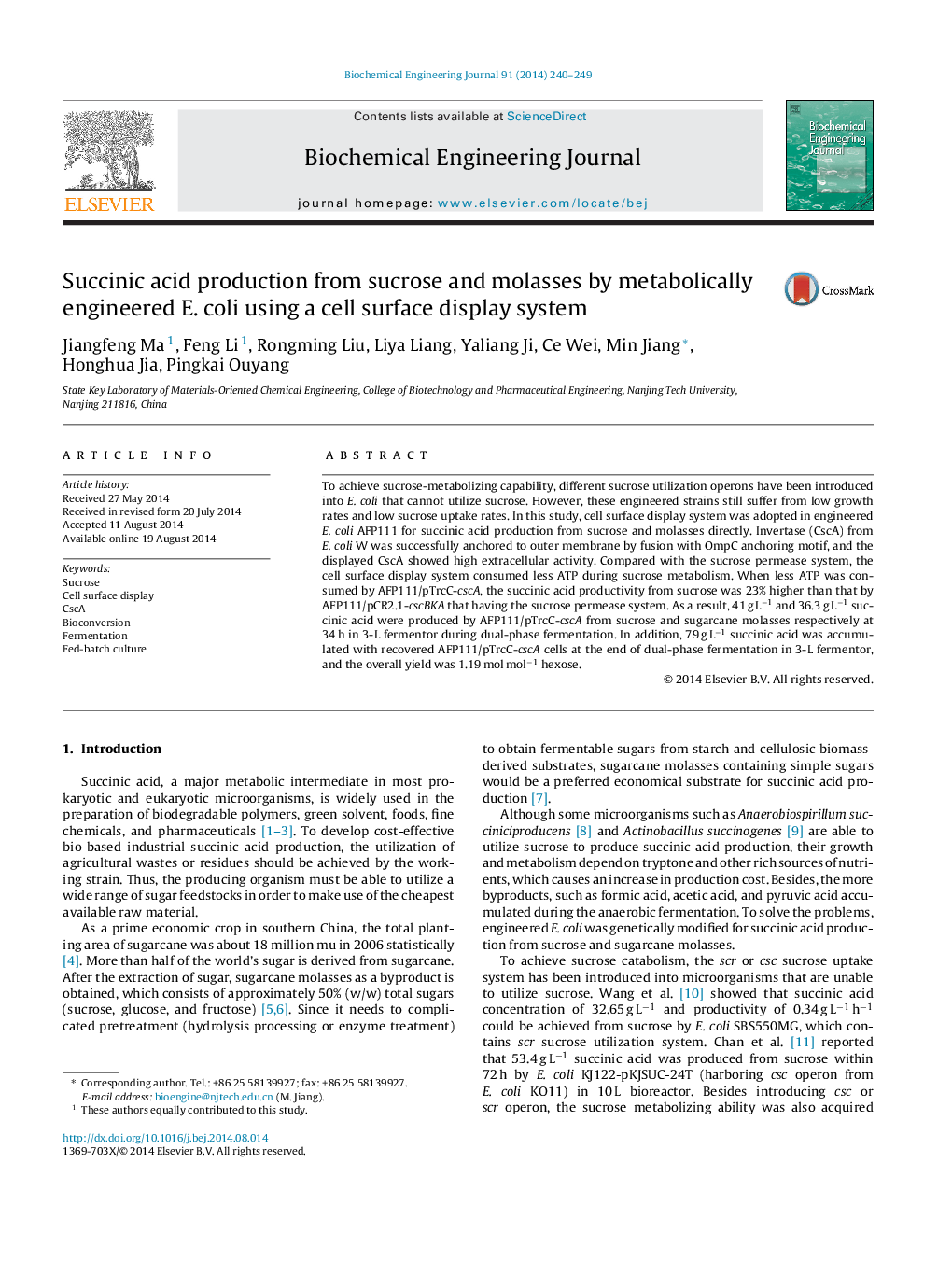| Article ID | Journal | Published Year | Pages | File Type |
|---|---|---|---|---|
| 3132 | Biochemical Engineering Journal | 2014 | 10 Pages |
•CscA was anchored to outer membrane of microbial cells by fusion with OmpC.•AFP111/pTrcC-cscA showed high extracellular invertase activity.•Surface display system consumed less ATP than permease system during sucrose uptake.•37.3 g L−1 succinate was obtained at 36 h in AFP111/pTrcC-cscA from molasses.•The yield of 1.2 mol mol−1 hexose was generated in AFP111/pTrcC-cscA from molasses.
To achieve sucrose-metabolizing capability, different sucrose utilization operons have been introduced into E. coli that cannot utilize sucrose. However, these engineered strains still suffer from low growth rates and low sucrose uptake rates. In this study, cell surface display system was adopted in engineered E. coli AFP111 for succinic acid production from sucrose and molasses directly. Invertase (CscA) from E. coli W was successfully anchored to outer membrane by fusion with OmpC anchoring motif, and the displayed CscA showed high extracellular activity. Compared with the sucrose permease system, the cell surface display system consumed less ATP during sucrose metabolism. When less ATP was consumed by AFP111/pTrcC-cscA, the succinic acid productivity from sucrose was 23% higher than that by AFP111/pCR2.1-cscBKA that having the sucrose permease system. As a result, 41 g L−1 and 36.3 g L−1 succinic acid were produced by AFP111/pTrcC-cscA from sucrose and sugarcane molasses respectively at 34 h in 3-L fermentor during dual-phase fermentation. In addition, 79 g L−1 succinic acid was accumulated with recovered AFP111/pTrcC-cscA cells at the end of dual-phase fermentation in 3-L fermentor, and the overall yield was 1.19 mol mol−1 hexose.
